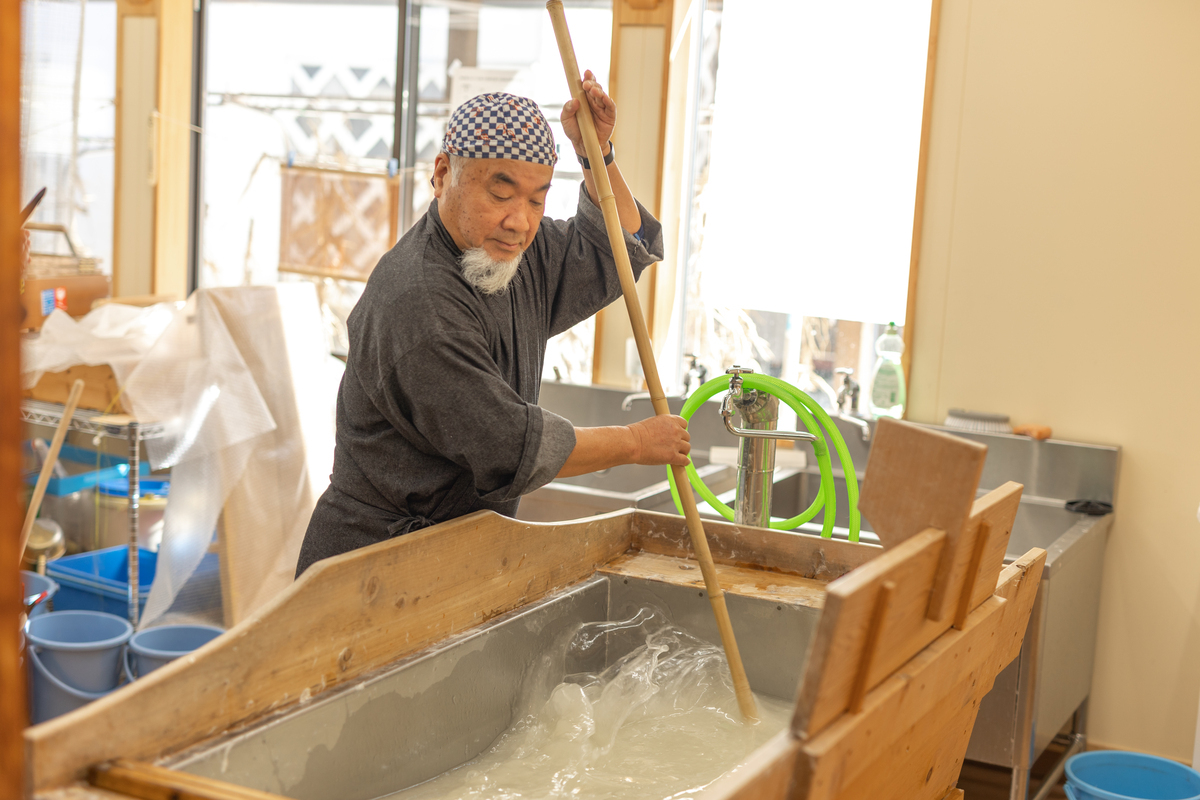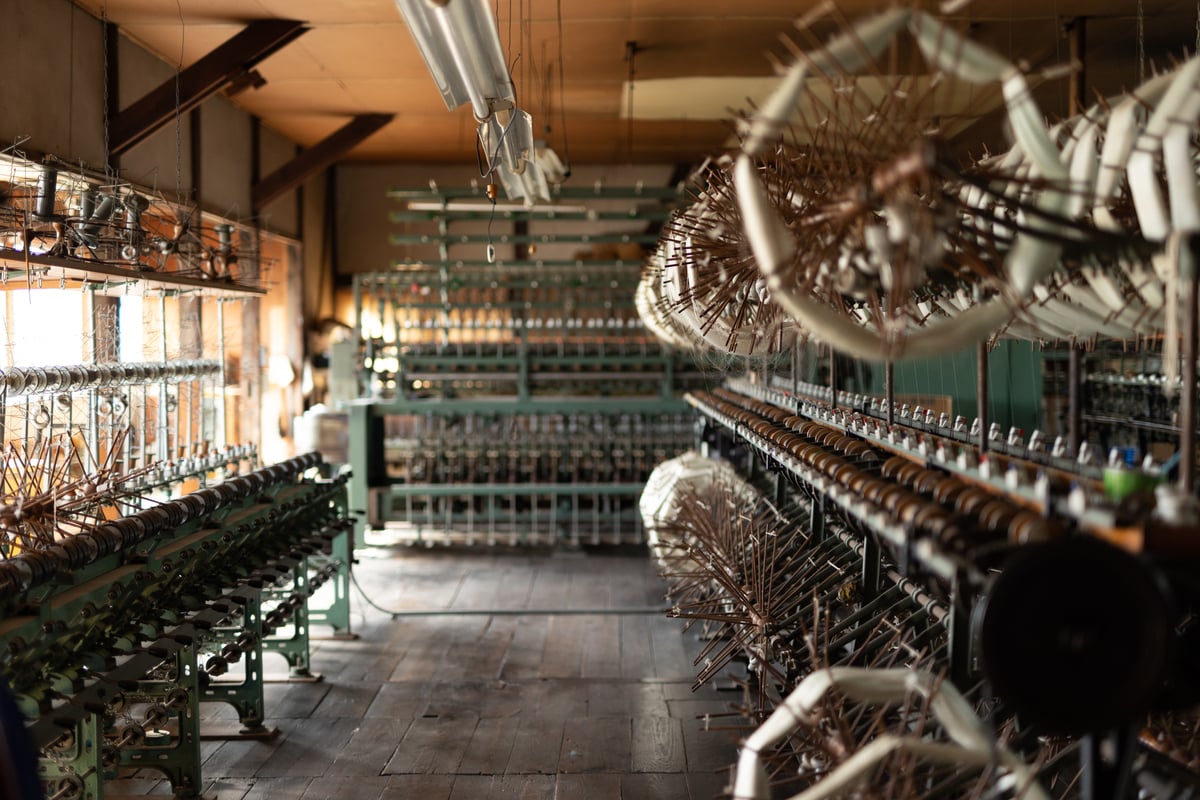The Traditional Crafts of Southern Nagano
Learn about the history and traditions of silk-weaving, wood turning and washi paper-making in Southern Nagano
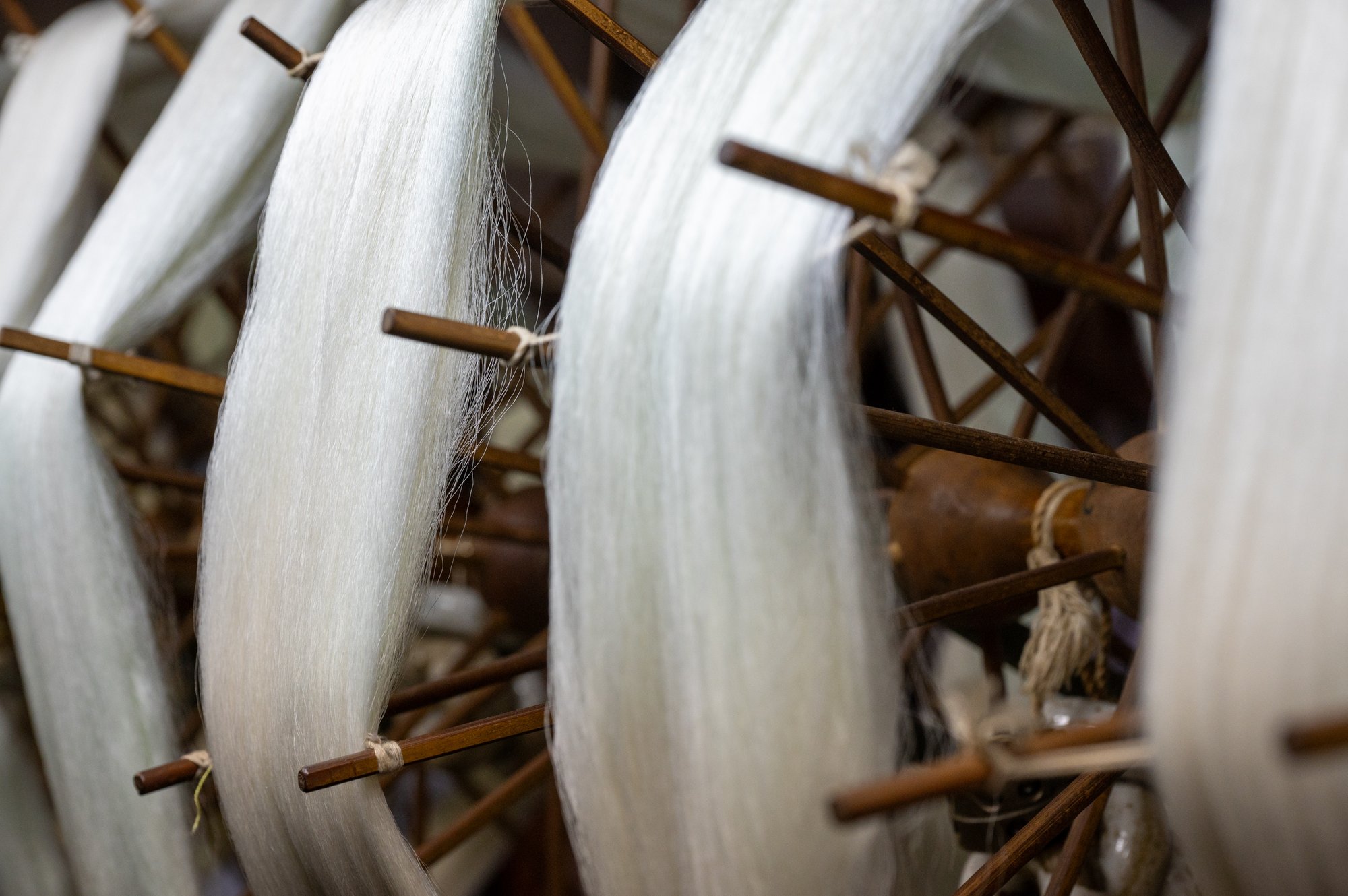
Surrounded by a wealth of natural resources—particularly lumber—and located along several trade routes such as the Tosando, Nakasendo and Akiba Kaido, the region of Southern Nagano prospered in manufacturing. Those manufacturing techniques have been passed down for centuries and are still utilized today in the process of making wood-turned plates, Japanese washi paper, mizuhiki cord and Ina Tsumugi silk.
Traditional Crafts in Southern Nagano
Rokuro Zaiku
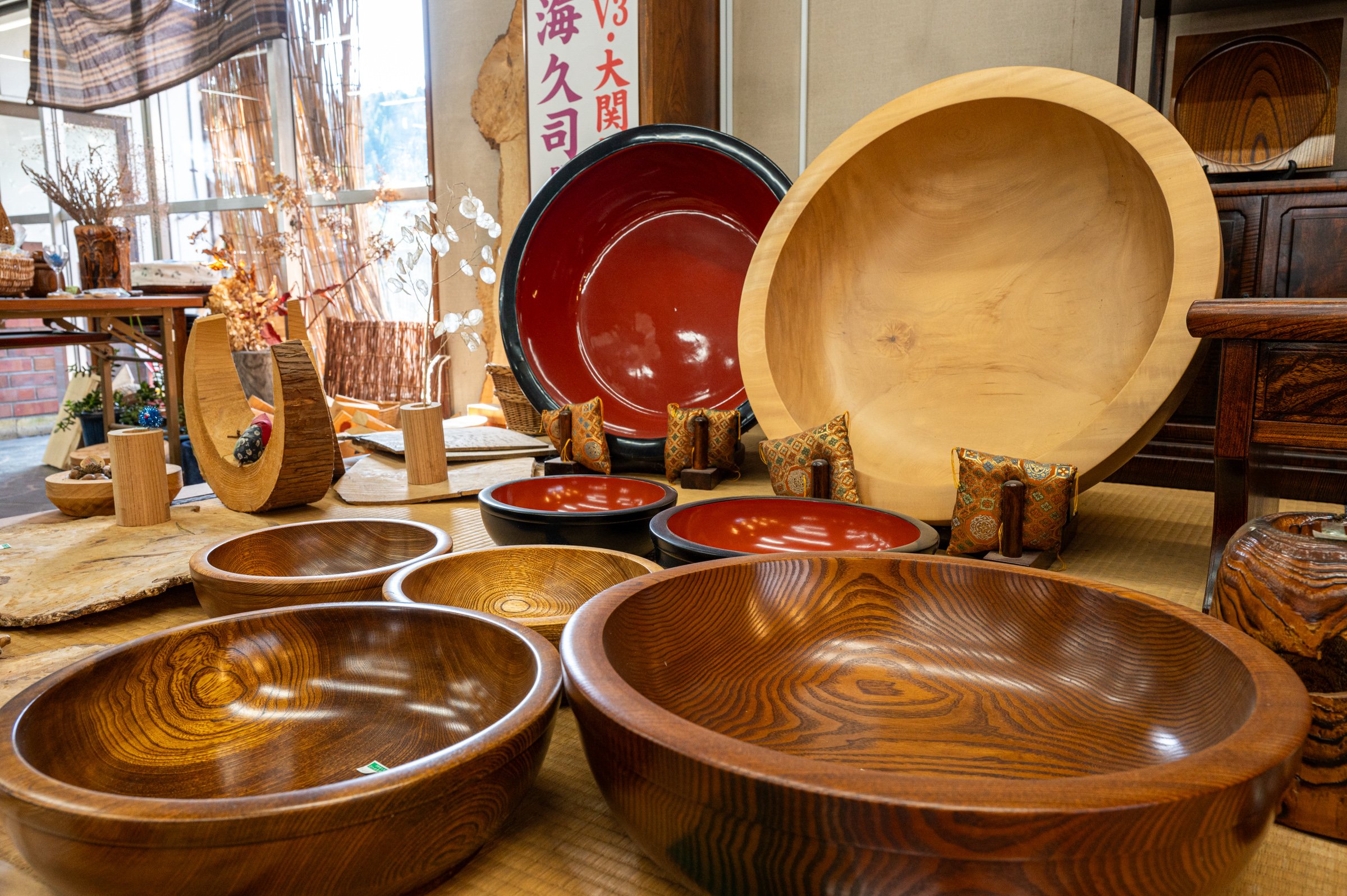
On the western side of the Central Japanese Alps is the Kiso Valley. A particularly steep and narrow valley, its most abundant resource was lumber, which has been used for centuries to produce beautiful woodwork.
In the southern portion of the Kiso Valley, large pieces of wood are turned by lathed and shaped into plates, trays and cups. These turned woodcrafts are known as Rokuro Zaiku. They are often coated with stains that show off their woodgrain, but some are coated in lacquer as well.
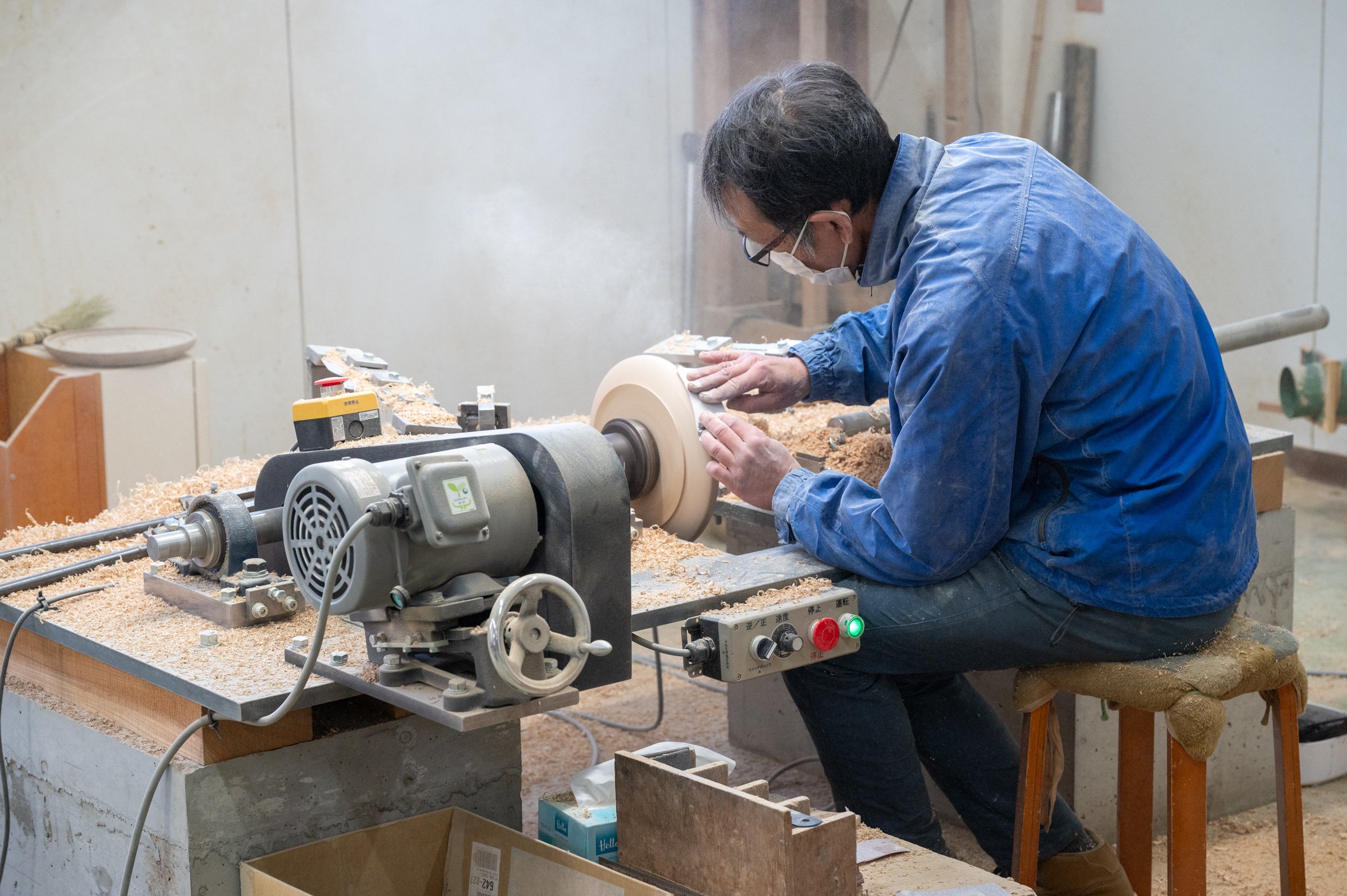
Woodturners in the area are called Kijishi, and the area where most of these artisans lived was referred to as Kijishi no Sato. There are seven lathe workshops still here today, about 20 minutes by car from Nagiso Station.
Mizuhiki and Washi Paper
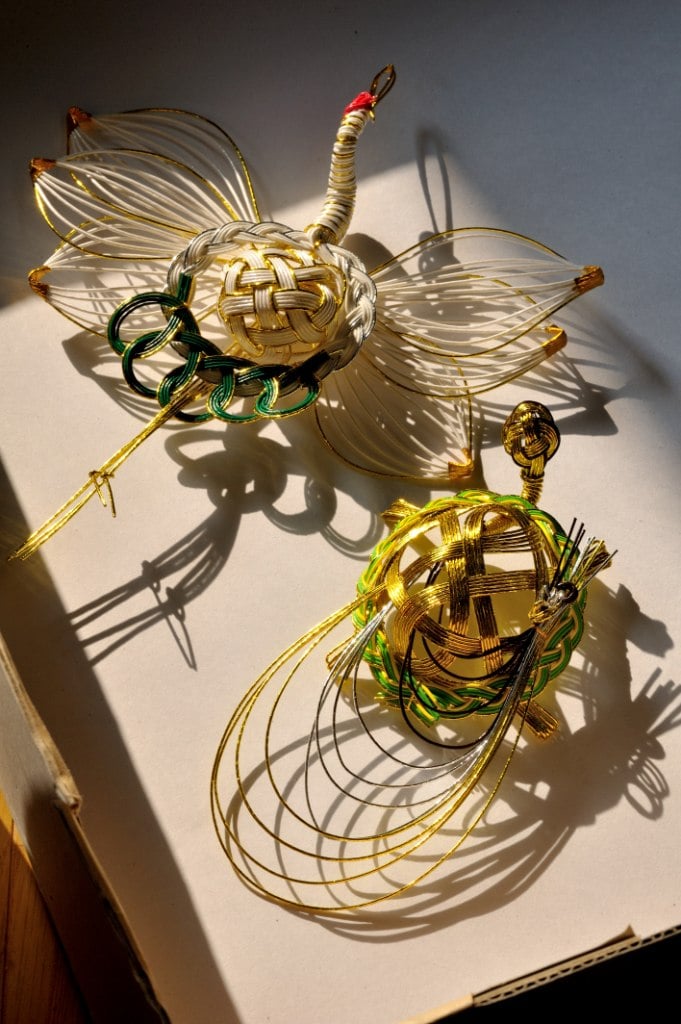
Mizuhiki is a traditional Japanese art form that involves the use of decorative cord made from twisted washi paper. It is often tied around gifts and envelopes, particularly those exchanged during important ceremonies. Knots of mizuhiki can vary from simple loops to extravagant, woven sculptures. Japanese washi paper, a more familiar product to many of us, is used for everything from important documents and works of art to lampshades and shoji sliding doors—and even to make mizuhiki cords themselves.
But the mizuhiki cords known today started as something quite different: a hair tie called motoyui. Long ago, hemp or straw would often be used to tie hair, but around the beginning of the Edo Period (roughly mid-17th century), the motoyui first appeared and quickly rose in popularity. It was a durable cord made by tightly winding a long strip of paper brushed with glue. After the era of the samurai ended, the popular chonmage hairstyle became prohibited, and the motoyui hair tie all but perished along with it. In its place, mizuhiki was born.
Iida was well suited to paper and mizuhiki production thanks to its cold yet sunny winter days (perfect for drying paper), plentiful ground water, plentiful south-facing slopes and an abundance of the necessary raw materials. It was one of the major producers of washi paper in Nagano, and to this day produces over 70% of Japan’s mizuhiki cords.
Here in Iida, you can make your own washi paper and your own mizuhiki cords. What special occasion will you use them for?
Ina Tsumugi Silk Fabric
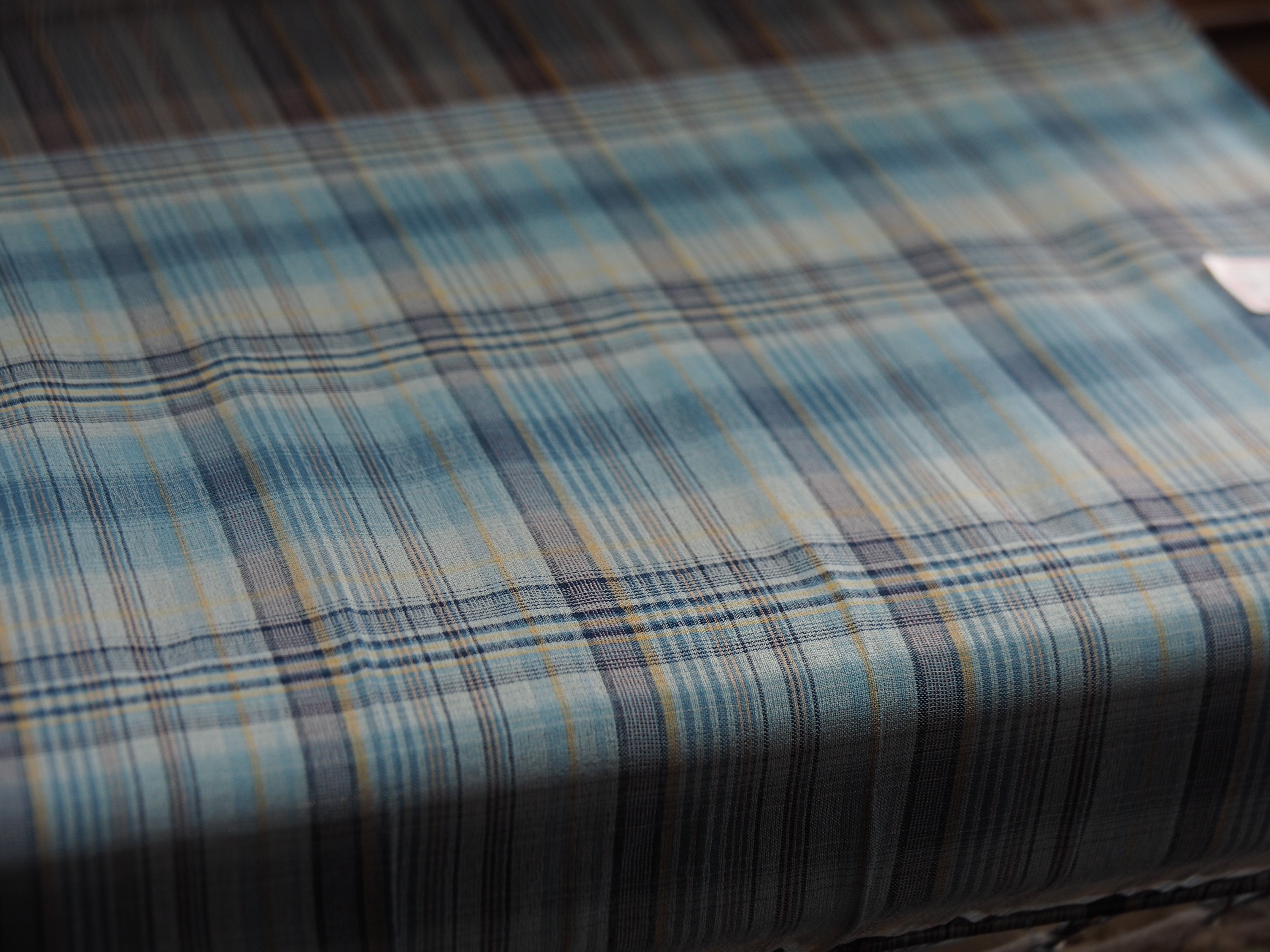
During the Edo Period, silkworm production was a common second job of farmers around Japan and particularly in Nagano. They raised silkworms in the attics of their homes and sold the cocoons to factories in big cities such as Kyoto and Nagoya. Damaged cocoons were considered defective, so they were woven into fabric to be used locally. The techniques that went into producing fabric from these defective cocoons became the basis for Ina Tsumugi.
Ina Tsumugi is known for its heavy weave that was well-suited to the cold climate of Nagano, as well as for the natural dyes made from tree bark and local plants called kusakizome.
At its peak, Ina tsumugi was produced in more than 120 factories. However, only one weaver remains today – Kubota Textile Industry Co., Ltd, founded in 1910. Utilizing techniques that have been passed down over a hundred years, they produce beautiful silk fabrics by hand.
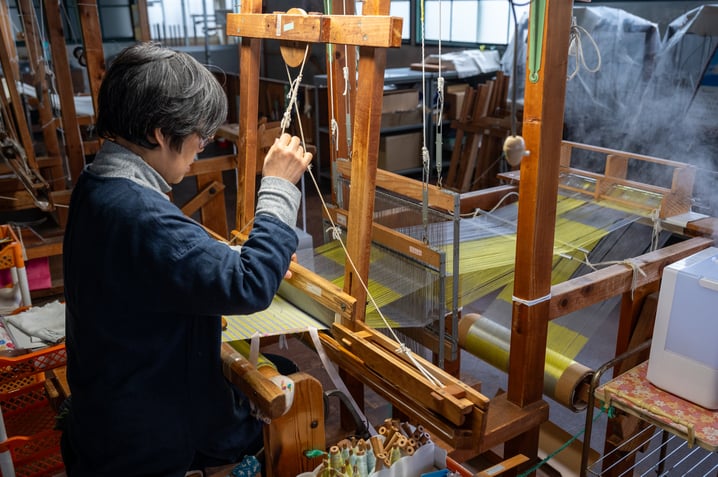
You can participate in a Ina Tsumugi silk-weaving experience, where you take a tour of the Kubota textile factory and make a silk placemat. It will surely make you appreciate the hard work that goes into creating even a single piece of clothing.
Conclusion
Beautiful turned wooden bowls and cups, durable and strong washi paper and mizuhiki cords and elegant pieces of tsumugi silk fabric have been produced in Southern Nagano for a hundred years or more, and passionate craftsmen continue to manufacture these products to this day. While they make a great souvenir, taking the time to learn more about their production and history offers a glimpse into the culture of the Southern Nagano region and the people who live here.

